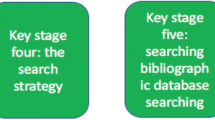Abstract
The publication of clinical- or laboratory-based research in peer-reviewed journals is seen as the final end point rewarding many months of detailed work. For both trainees and established consultants alike, having a submitted manuscript rejected is both frustrating and disheartening. All journals publish details regarding manuscript structure and preparation. However these “in-house” guidelines tell little about what editors are looking for in their journals, and indeed what can be done to ensure acceptance of any work that researchers submit. The authors surveyed the editors of 40 peer-reviewed plastic surgery and related subspeciality journals regarding factors that influence their decision to accept or reject a manuscript. The aim was to establish factors that influence editors’ decisions regarding submitted papers, which then would enable aspects to be highlighted that authors could address to expedite publication and produce relevant guidelines to facilitate this process. The results demonstrate that editors value an original, rigorously designed manuscript with valid methodology and appropriate conclusions. Adherence to the philosophy and aims of the journal and the journal’s target audience will further improve the likelihood of successful publication for the submitting authors.






Similar content being viewed by others

References
Olson CM, Rennie D, Cook D, DickersinK, Flanagin A, Hogan JW, Zhu Q, Reiling J, Pace B (2002) Publication bias in editorial decision making. JAMA 287:2825–2828
Purcell GP, Donovan SL, Davidoff F (1998) Changes to manuscripts during the editorial process: Characterizing the evolution of a clinical paper. JAMA 280:227–228
Van Der Steen LP, Hage JJ, Kon M, Mazzola R (2003) Reliability of a structured method of selecting manuscripts for a plastic surgical scientific meeting. Plast Reconstr Surg 111:2215–2222
Lee KP, Boyd EA, Holroyd-Leduc JM, Baccheti P, Bero LA (2006) Predictors of publication: Characteristics of submitted manuscripts associated with acceptance at major biomedical journals. Med J Aust 184:621–626
Ray J, Berkwits M, Davidoff F (2000) The fate of manuscripts rejected by a general medical journal. Am J Med 109:131–135
Nemery B (2001) What happens to the manuscripts that have not been accepted for publication in Occupational and Environmental Medicine? Occup Environ Med 58:604–607
Chew FS (1991) Fate of manuscripts rejected for publication in the AJR. AJR Am J Roentgenol 156:627–632
Hall SA, Wilcox AJ (2007) The fate of epidemiologic manuscripts: A study of papers submitted to epidemiology. Epidemiology 18:262–265
Liesegang TJ, Shaikh M, Crook JE (2007) The outcome of manuscripts submitted to the American Journal of Ophthalmology between 2002 and 2003. Am J Ophthalmol 143(4):551–560
Callaham M, Wears RL, Weber E (2002) Journal prestige, publication bias, and other characteristics associated with citation of published studies in peer reviewed journals. JAMA 287:2847–2850
Barbui C, Ciprani A, Malvini L, Tansella M (2006) Validity of the impact factor of journals as a measure of randomized controlled trial quality. J Clin Psychiatry 67:37–40
Kurmis AP, Kurmis TP (2006) Exploring the relationship between impact factor, manuscript rejection rates in radiologic journals. Acad Radiol 13:77–83
Abby M, Massey MD, Galandiuk S, Polk HC Jr (1994) Peer review is an effective screening process to evaluate medical manuscripts. JAMA 272:105–107
Wager E, Parkin EC, Tamber PS (2006) Are reviewers suggested by authors as good as those chosen by editors? Results of a rater-blinded, retrospective study. BMC Med 30:13
Callaham ML, Baxt WG, Waeckwrle JF, Wears RL (1998) Reliability of editors’ subjective quality ratings of peer reviews of manuscripts. JAMA 280:229–231
Author information
Authors and Affiliations
Corresponding author
Rights and permissions
About this article
Cite this article
Caulfield, R.H., Maleki-Tabrizi, A., Pleat, J.M. et al. The Factors Considered by Editors of Plastic Surgery Journals in Evaluating Submitted Manuscripts. Aesth Plast Surg 32, 353–358 (2008). https://doi.org/10.1007/s00266-007-9079-5
Published:
Issue Date:
DOI: https://doi.org/10.1007/s00266-007-9079-5



